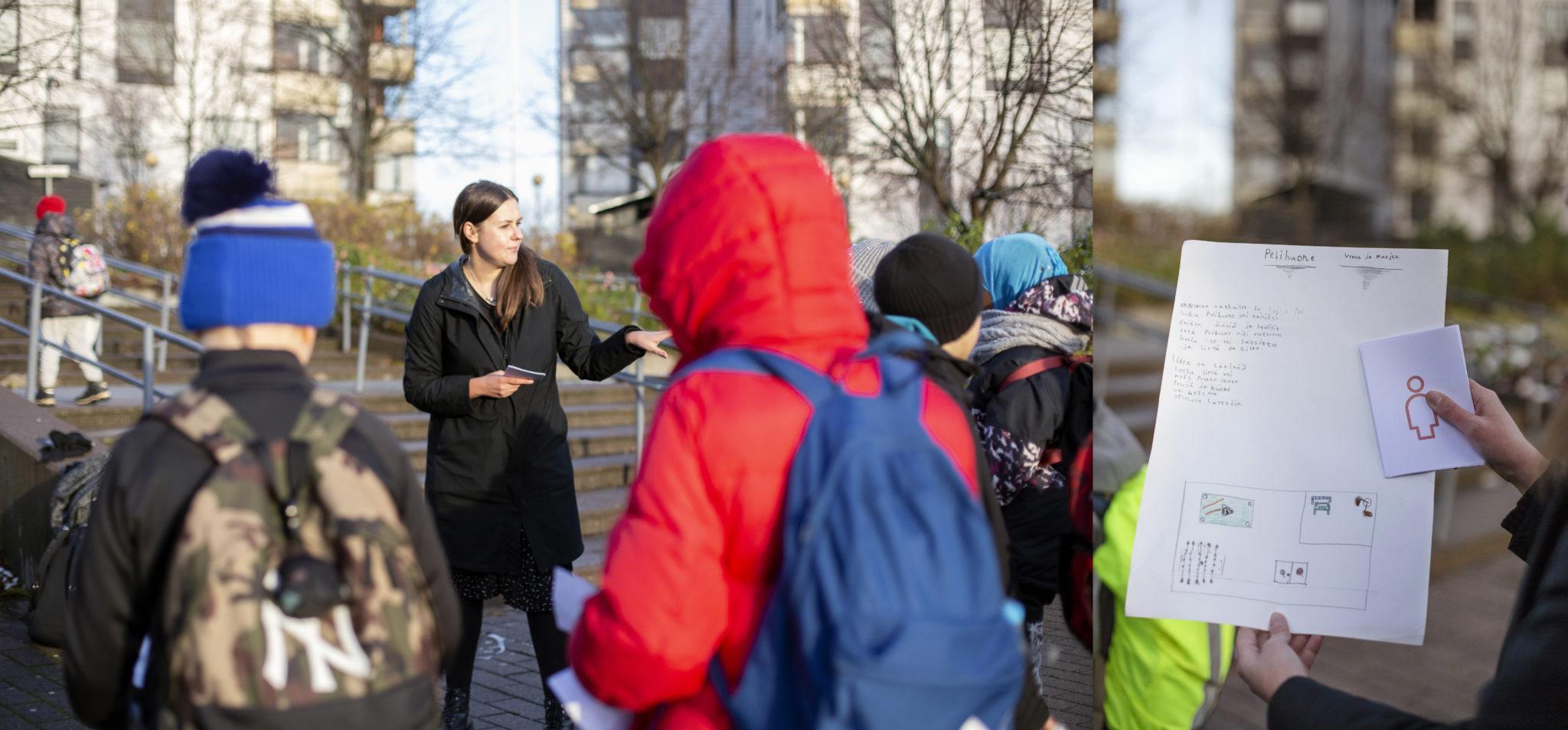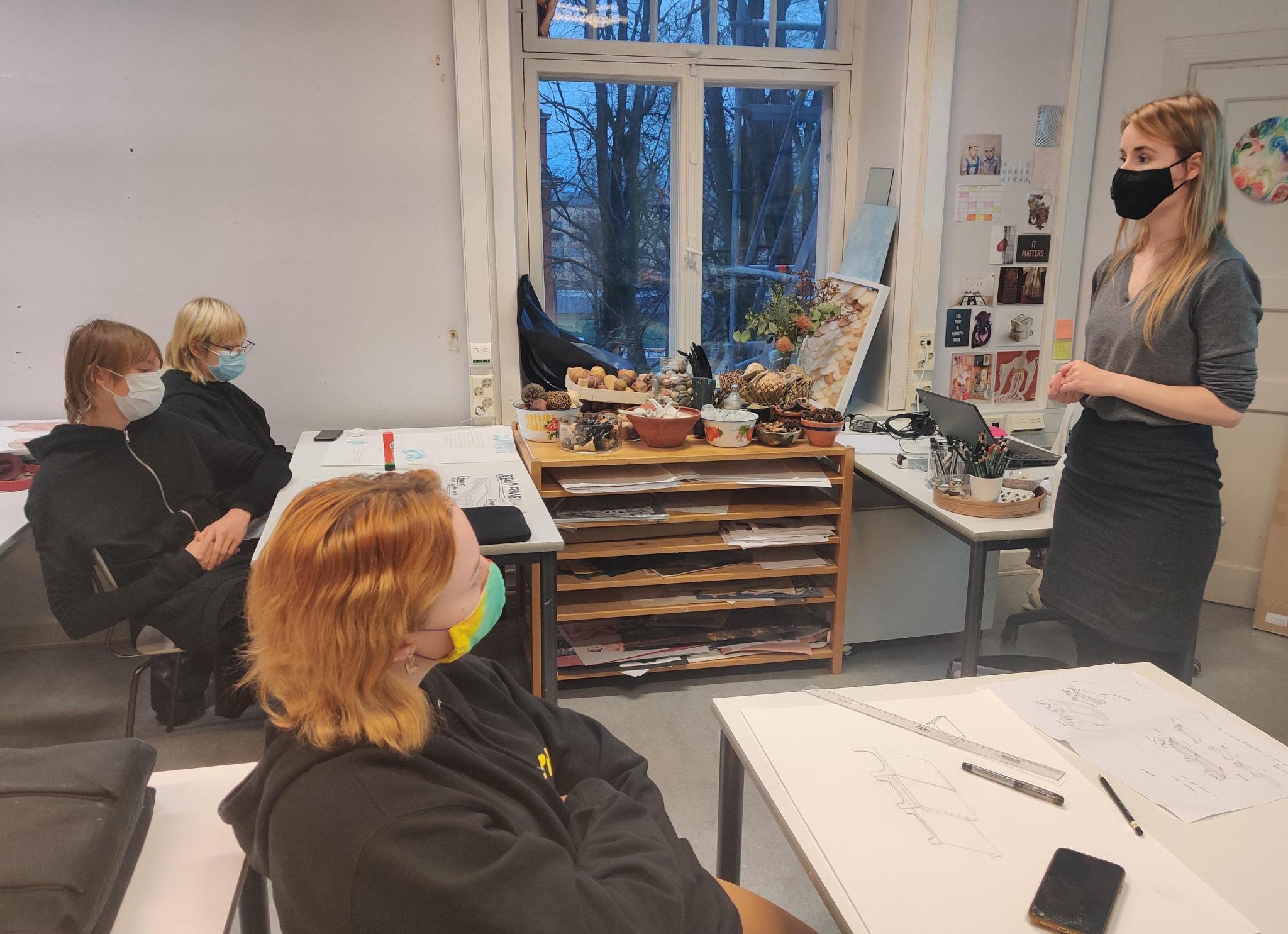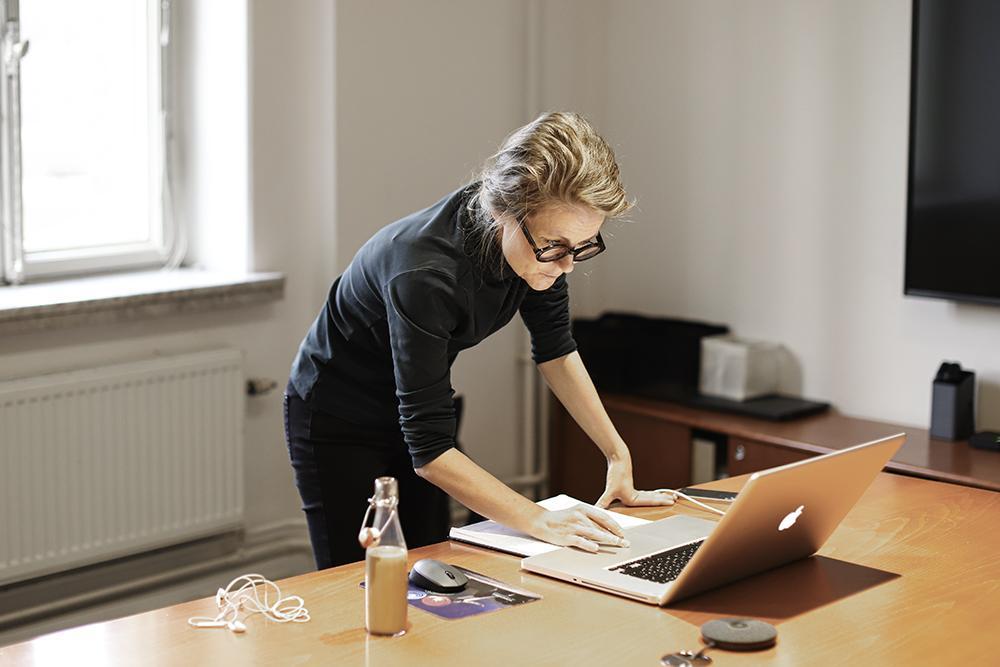Designakatemia brings futures thinking to schools
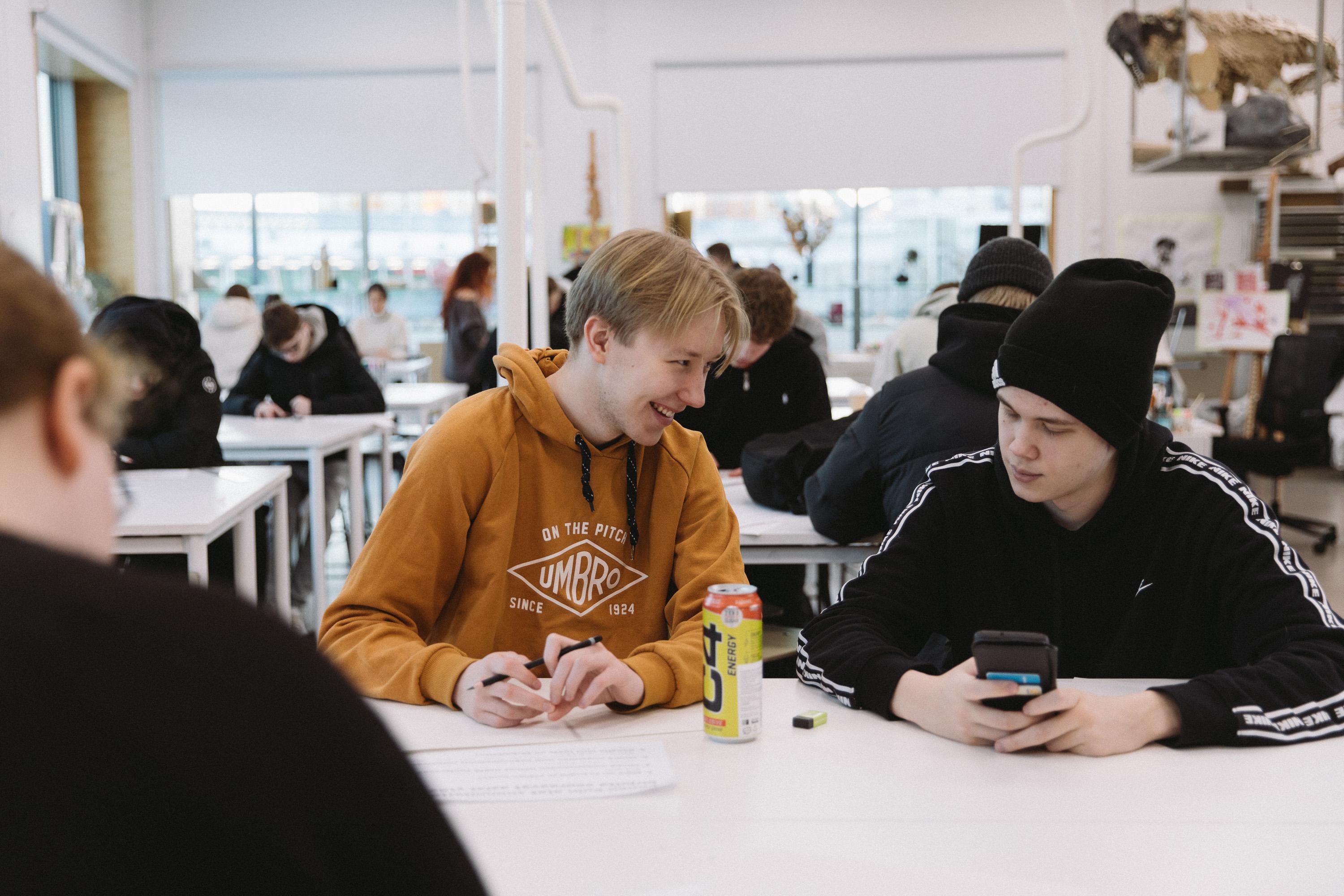
What happens when designers open their toolbox to school students? Designers Oona Kallio, Jonas Hakaniemi and Elina Huumo visited three different schools in Helsinki taking along their design assets.
Together with the Museum of Finnish Architecture and the Design Museum, Ornamo implements the multidisciplinary Designakatemia project to schools with design professionals as teachers’ working pairs. The idea is to share the design process as a learning method for teachers to develop children’s and young people’s creative problem-solving. Design courses are used for planning a more sustainable future together with active participation.
Designakatemia courses at school always start with the basics of design. For example, a designer first asks students about their perceptions of design, talks about their own work as a designer, and explains the basic concepts used by professionals, such as product development, brand building and sustainable development.
Genuine interest in design
Interior designer Oona Kallio led her own design course in three seventh grade classes at Itäkeskus comprehensive school. For the first time, she was talking about her work as a designer to an audience that had no previous contact with the designer’s work. The students spoke many languages and language barriers were created, but the coordination of different things and visual expression brings it all together in design work.
“Returning to comprehensive school was eye-opening! The students showed a genuine interest in design. Design work and design as a concept were quite unknown to many, so we started from scratch. In my course, I wanted to strongly highlight the fact that everyone can draw and design – these ideating, and implementation methods can be practiced.
At first, I chose sketching, which involves drawing familiar objects traditionally through transparent sketching paper. You can get results quickly without practicing hand drawing, which many people find difficult or just a special talent for creative people. The feelings of success arose when the students came to me on their own initiative to present their course work.
I felt it was important to point out that designers do not want to fill the globe with goods and promote consumption, but quite the opposite. We can contribute in creating more sustainable and sensible production of goods.
One student stood out to me because of genuine interest in my design course. He was lively and loud, which might interfere on other kind of studying, but he asked a lot of questions, which is very important in design work. He did all the tasks with care and was really on fire with designing shoes!
In teamwork, typical of designers, questions are used to highlight everyone’s points of view and at the same time questioning whether one person’s thinking is more correct than another’s. The same thing happened with the students as it did to us designers in our work: we are easily inspired by our own and others’ ideas, and constant curiosity drives the creative process forward’, Oona says.
The most important professional characteristic of designers is not related to the facts learned, but to the ability to perceive: at the same time, both the whole and the details must be taken into account, and how different practical matters affect each other; Whether you’re designing a sofa, jacket, app, game, décor or a new virtual reality. Individual knowledge, skills and forms of expression lay the foundation for a designer’s professional identity, but the unifying factor is so-called design thinking, which refers to systemic design that considers the needs of both people and the environment.
The designer must examine the usability, comfort, attractiveness, materials, manufacturing method, energy consumption of the object to be designed, and how the product or design object is repaired, recycled, reused, duplicated or disposed. All possible and impossible things must be considered, which is why design always begins with a thorough examination of things. This holistic and probing mindset is increasingly needed in this impulsive and globally operating world.
Empathic design thinking softens hard values
Designer Elina Huumo became part of a team of teachers at Helsinki Normal Lyceum comprehensive and upper secondary school, whose goal was to promote the school’s sense of community. In addition to teachers Minna Matinlauri and Päivikki Välttilä, there was another designer, a landscape architect Suvi Pohjola-Stenroos.
Norssi is a training school belonging to the Faculty of Educational Sciences of the University of Helsinki, so it is not an ordinary school. Practical training schools for future pedagogues carry out research, experimentation and development activities in various projects. It was easy for the designer to settle into this experimental teaching environment.
“My task in the team was to bring design tools to creative problem solving and how to apply new solutions in practice. Lyceum Hortus projects aim was to increase the comfort and communality of the school together with the students. In the beginning, we studied what kind of wishes and thoughts the students themselves have. Then we set out to interview local entrepreneurs and residents. We proceeded method-based so that the students became familiar with design research methods and prototyping. The result was a yard plan that supports a sense of community.
For high-average high school students, creative thinking can be challenging in the midst of all the rush. In upper secondary school, study pressures increase, and it is certainly natural to rely on fact-based thinking and duplication of best practices. The career paths seemed clear and many of them had it planned to continue at the Faculty of Law or the School of Business. For them, the future seemed quite ready.
Together, we started to consider whether the future could look different depending on how we build it ourselves. Can we influence our own and the environment’s future? From this starting point, it was good to start unpacking ideas, shaking up some of the overshadowed creativity and bringing out visions. I felt a sense of accomplishment when the students told me that they had realized that they were the makers of the future and not just recipients’, Elina says.
Research has shown that creativity is increasingly needed in working life, especially where work is managed solely from the perspective of efficiency and productivity. At the heart of design methods is empathy, understanding the other. The goal of design learning is to get different learners to work together creatively regardless of their own characteristics, backgrounds and competence levels. It only takes pausing and curiosity to imagine a good future.
Shoes that grow with the foot
Designer Jonas Hakaniemi visited Itäkeskus fifth grade and Vuosaari upper secondary school. He gave a similar design challenge to both grades. The task was to take a look at an existing object and come up with a new additional feature for it.
“When you asked the fifth graders something about the assignment, half a class of hands went up. The enthusiasm is palpable. I had to keep a cool head so as not to stray into topics other than those that needed to be discussed. The upper secondary school students, on the other hand, listened very well, but there were hardly any hands raised when asking questions.
Well, I don’t ask questions either when I’m sitting in the audience at seminars, occasionally looking at what’s going on my mobile phone. It seems that our innate curiosity and impulsive communication fade with age and we are tethered to our busy schedules. Even schools have schedules and pressures, which means that thoughts don’t really have time to open. That’s why I gave the students an easy but imaginative task. You need to get your own brain moving immediately in creative work,” Jonas says.
The end results of the additional feature task were shoes that grow with the foot, self-turning book pages, a teleporting car that runs on water, and a mobile phone that never falls to the floor but flies straight back into your hand. One student designed a bed that wakes the sleeper out of bed by tipping.
“The Designakatemia generated insightful and useful ideas. It is also nice to tell young people about my own work, because the profession of designer is not very well known and is easily confused with the profession of an artist, even though the education is completely different. I told them that a designer is somewhere between an engineer and an artist, but at least I’m closer to an engineer. There is technological and artistic expertise involved, but as design professionals, we have our own place as part of product and service development and foresight work,” Jonas says.
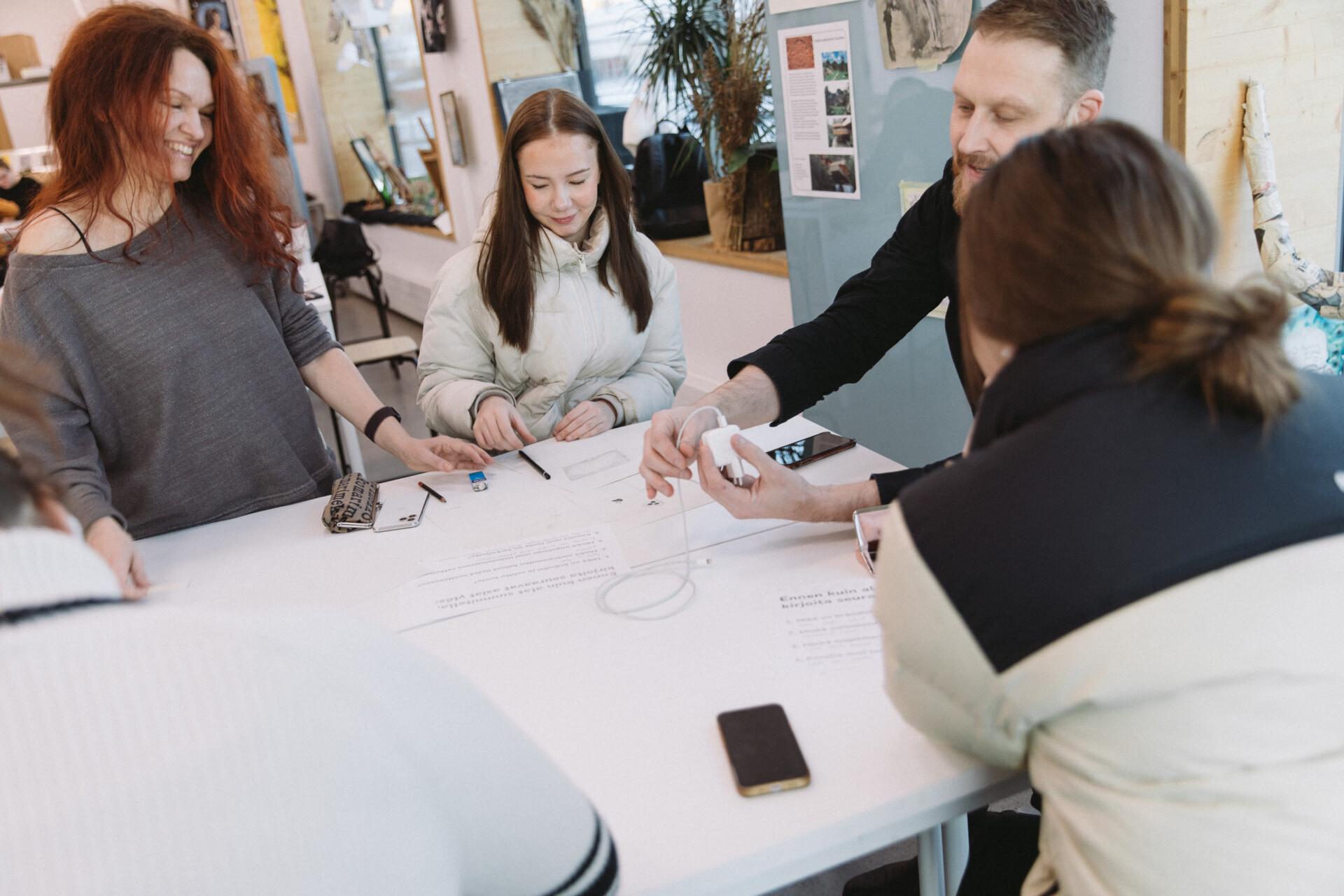
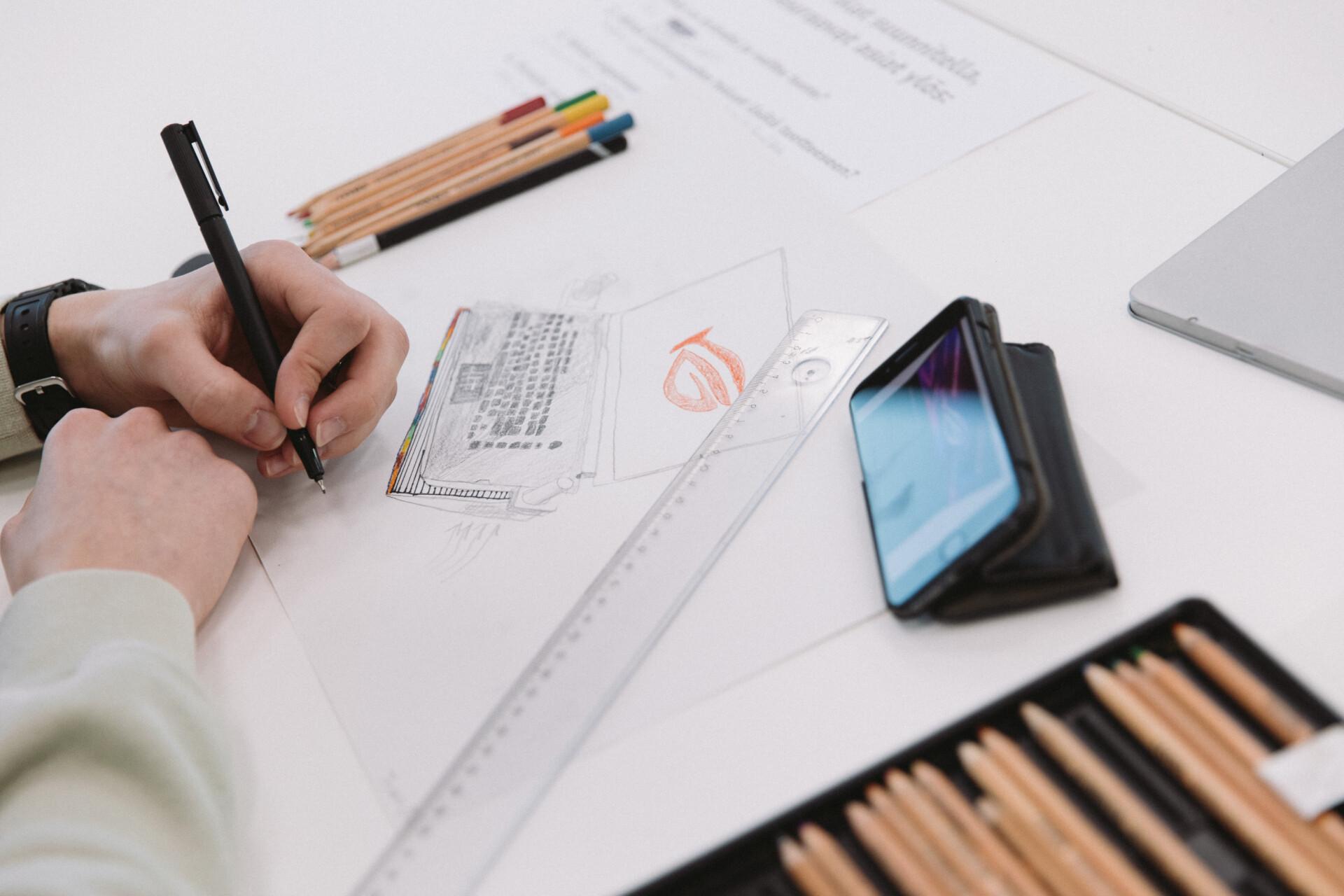
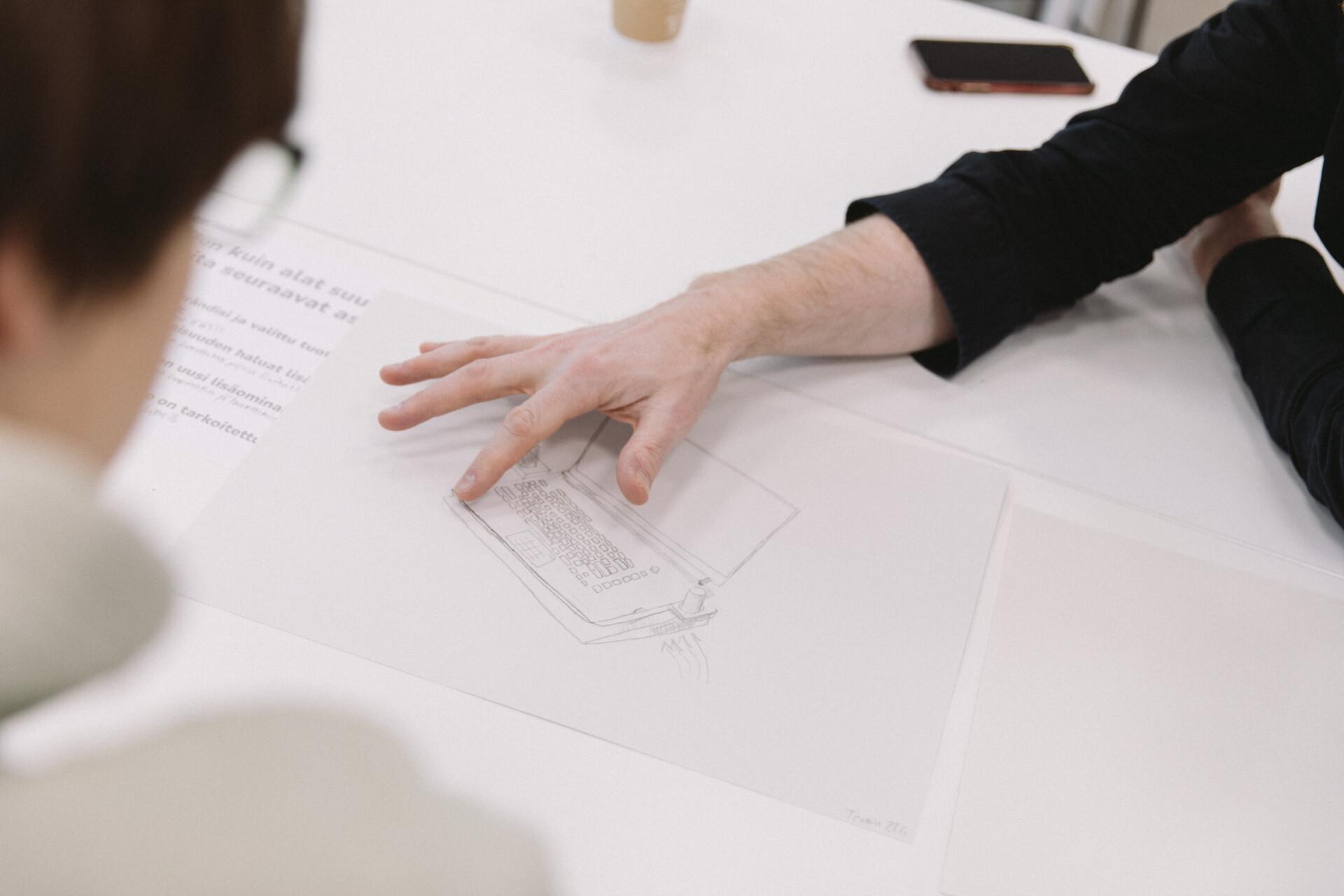
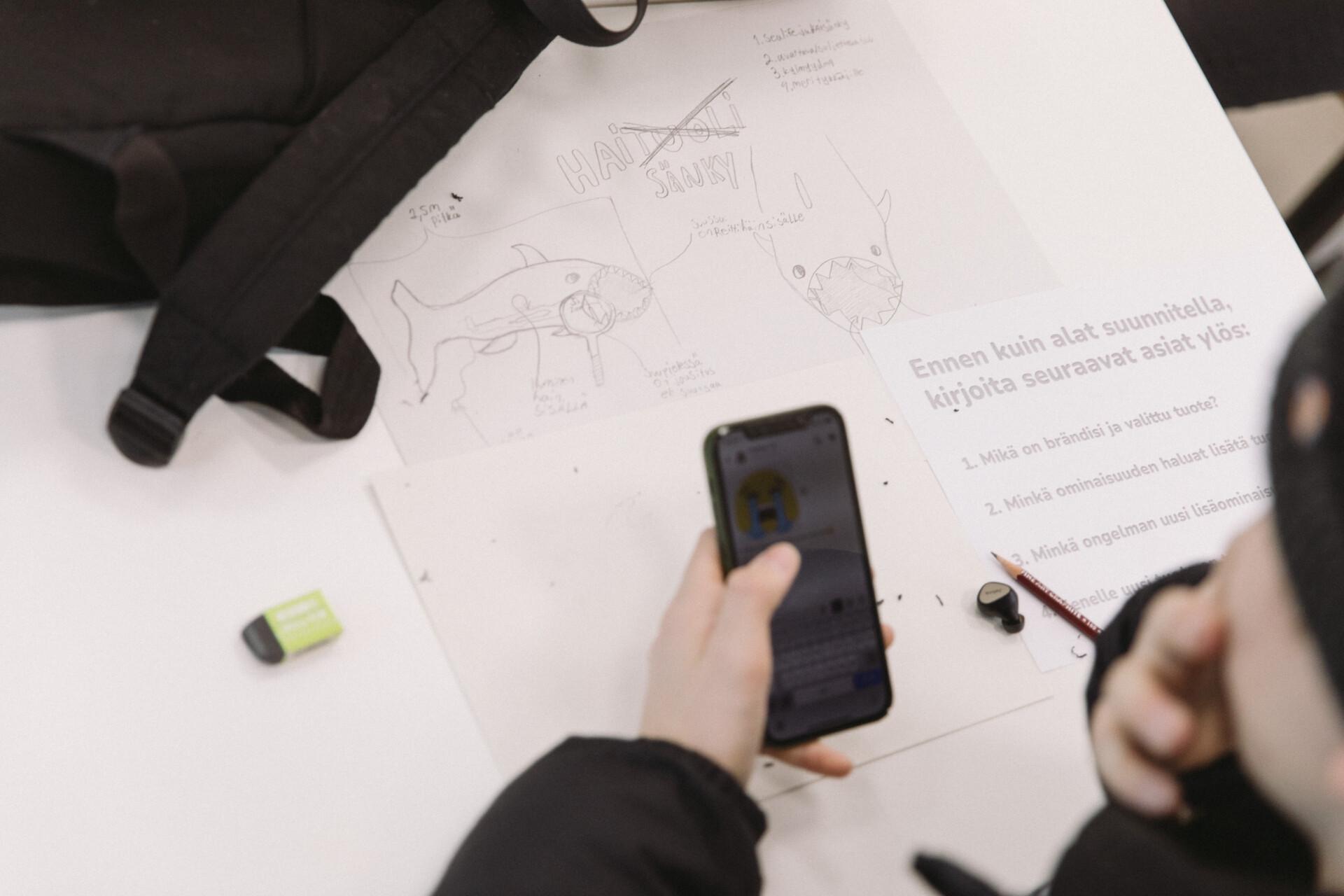
Design Academy has operated in schools in Helsinki for fourteen years. The activities are supported by the City of Helsinki.

